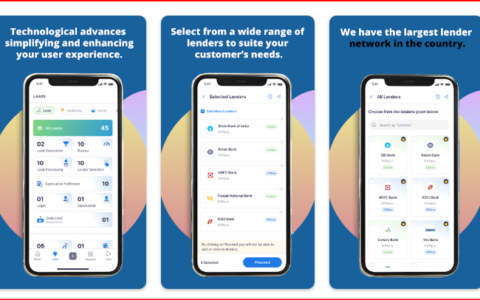
In today’s digital age, influencer marketing has emerged as a powerful strategy for brands to connect with their target audiences. One of the key metrics used to measure the success of influencer marketing campaigns is Earned Media Value (EMV). This article delves into the intricacies of influencer marketing and explores the profound impact it has on Earned Media Value.
I. Introduction to Influencer Marketing
A. Definition and Evolution
Influencer marketing involves collaborating with individuals who have a significant online following to promote a product or service. Over the years, it has evolved from celebrity endorsements to partnerships with social media influencers across various platforms.
B. Importance in the Digital Landscape
With the rise of social media platforms such as Instagram, YouTube, TikTok, and others, influencers have become key players in shaping consumer opinions and behaviors. Brands recognize the potential of influencer marketing in reaching and engaging their target audience in a more authentic and relatable manner.
II. The Dynamics of Earned Media Value (EMV)
A. Understanding Earned Media
Earned media refers to the exposure a brand receives through word-of-mouth, mentions, shares, and other unpaid channels. Unlike paid media, which involves advertising, and owned media, which includes a brand’s owned content, earned media is generated organically.
B. Calculating Earned Media Value
EMV quantifies the value of the publicity generated through various channels. It takes into account the reach, engagement, and impact of the content. Influencer marketing significantly contributes to earned media, as influencers create content that resonates with their followers, leading to organic shares and discussions.
III. Influencer Marketing Channels and EMV Impact
A. Instagram
Instagram, with its visually appealing content and diverse user base, is a hotspot for influencer marketing. Brands leverage influencers on Instagram to showcase their products in authentic ways. The platform’s algorithm rewards engagement, making it easier for influencers to boost a brand’s EMV.
B. YouTube
YouTube influencers create in-depth content, offering reviews, tutorials, and entertainment. Their influence extends beyond a single post, leading to sustained engagement and increased EMV over time. Brands often collaborate with YouTube creators for long-term partnerships, maximizing their earned media impact.
C. TikTok
TikTok’s short-form video format has taken the social media world by storm. Influencers on TikTok have the power to make a trend viral, generating immense earned media for brands participating in these trends. The platform’s rapid growth has made it a valuable channel for influencer marketing.
IV. Factors Influencing Influencer Marketing Impact on EMV
A. Authenticity and Trust
The authenticity of influencer content plays a crucial role in determining its impact on EMV. Followers are more likely to engage with content that feels genuine, leading to increased organic sharing and discussions.
B. Relevance to Audience
Aligning the influencer’s content with the interests and demographics of the target audience enhances the campaign’s effectiveness. When content resonates with the audience, it fosters a sense of connection and increases the likelihood of earned media.
C. Engagement Metrics
High engagement rates, including likes, comments, and shares, contribute significantly to EMV. Influencers with an engaged and active audience can amplify a brand’s message, resulting in a higher EMV.
V. Challenges and Opportunities in Influencer Marketing
A. Saturation and Authenticity Concerns
As influencer marketing grows in popularity, some platforms face saturation, leading to concerns about authenticity. Brands must carefully select influencers to maintain the trust of their audience and maximize EMV.
B. Micro-Influencers and Niche Markets
Micro-influencers, with smaller but highly engaged audiences, present an opportunity for brands to target niche markets effectively. These influencers often generate more authentic content, leading to increased earned media impact.
VI. Measuring the Success of Influencer Marketing Campaigns
A. Tools and Metrics
Various tools and metrics help brands measure the success of their influencer marketing campaigns. Tracking reach, engagement, sentiment analysis, and conversion rates contribute to a comprehensive evaluation of the campaign’s impact on EMV.
B. Case Studies
Examining successful influencer marketing case studies provides valuable insights into strategies that effectively boost Earned Media Value. Learning from real-world examples helps brands refine their approach and maximize the impact of future campaigns.
VII. Future Trends in Influencer Marketing and EMV
A. Emerging Platforms
As new social media platforms and content formats emerge, influencers adapt to these changes, opening up new avenues for brands to explore and increase their EMV.
B. Integration with E-commerce
The integration of influencer marketing with e-commerce platforms is a growing trend. Brands collaborate with influencers not only for brand awareness but also to drive sales, directly impacting their EMV.
VIII. Conclusion
In conclusion, influencer marketing’s impact on Earned Media Value is profound and multifaceted. By understanding the dynamics of influencer marketing channels, calculating EMV, considering influencing factors, navigating challenges, and embracing future trends, brands can harness the full potential of influencer marketing to amplify their earned media impact in the digital landscape. As the industry continues to evolve, staying attuned to these dynamics will be crucial for brands seeking to maximize the ROI of their influencer marketing efforts.



